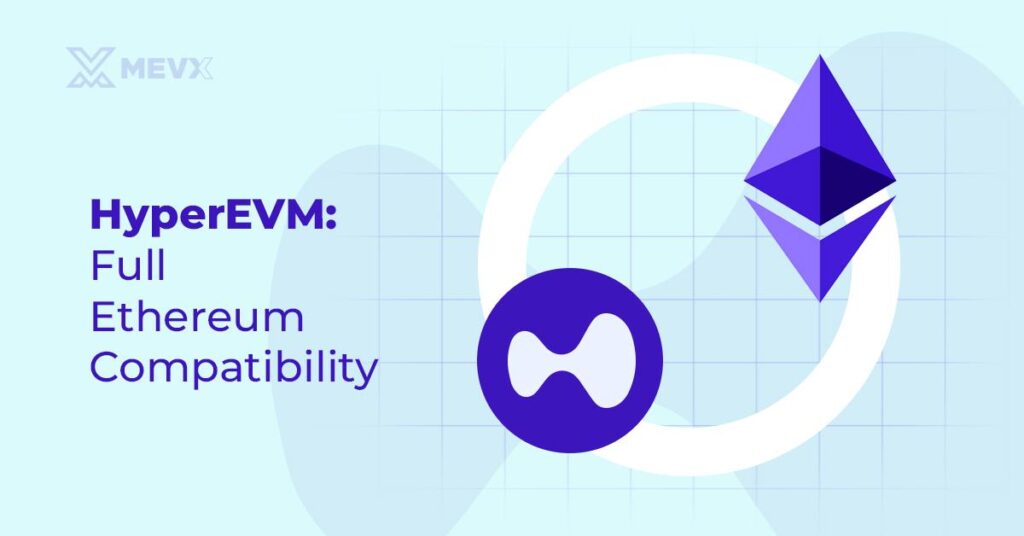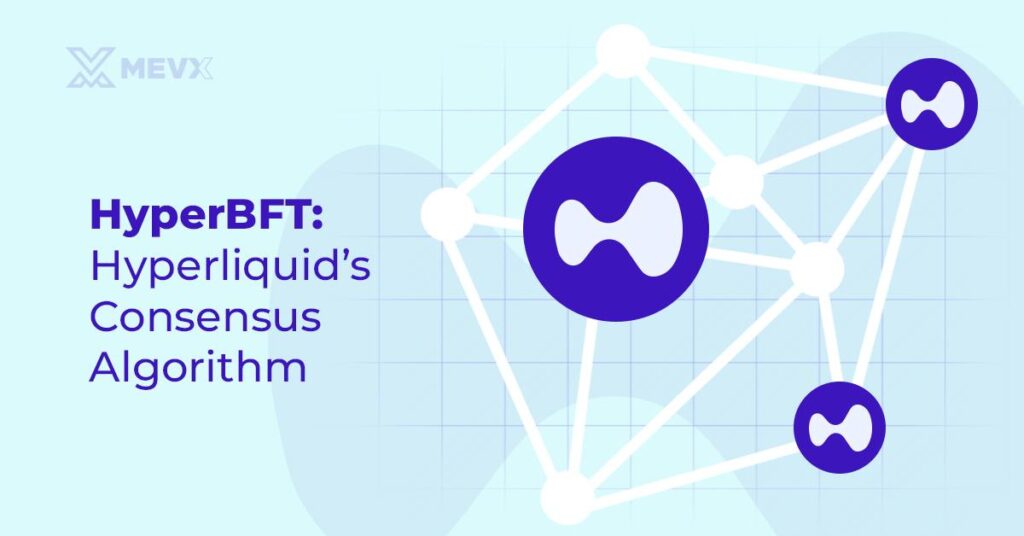Hyperliquid is a development-oriented, high-speed trading, and sophisticated financial use case platform in a fast-changing DeFi world. Based on its blockchain, Hyperliquid uses a mix of Ethereum-compatible smart contracts with custom infrastructure to develop an environment fitted best for performance and dependability. The following article gives an overview of how Hyperliquid works—a deep dive into the technical guts of HyperEVM, the HyperBFT, and this new concept of vaults.

How Does Hyperliquid Work? The Hyperliquid Blockchain
At the heart of Hyperliquid is a proprietary blockchain—a layer-1 network built for high-frequency trading and DeFi innovation. Two very important constituents lie at the heart of this blockchain:
- HyperEVM: A full-featured EVM residing on L1 of Hyperliquid.
- HyperBFT: A custom consensus algorithm that provides for both speed and security at scale.
All these components in combination contribute to one single environment that enables trading infrastructure and decentralized applications.
HyperEVM: Full Ethereum Compatibility
HyperEVM is the Hyperliquid answer to the need to bridge Ethereum’s strong smart contract ecosystem with the speed and efficiency of a custom-made L1 blockchain. Unlike other EVM implementations, HyperEVM is integrated natively into the Hyperliquid L1, operating at the same consensus layer as the latter, namely HyperBFT.

- Native Integration
HyperEVM has enabled smart contracts to directly interface with the core trading functionalities offered by Hyperliquid, including on-chain spot and perpetual futures order books. This removes the need for taping into the platform via external bridges or other adapters, hence providing a line of code that makes dApp-to-trading platform interactions far more seamless.
- Enabled Execution Model
HyperEVM runs sequentially with the L1 blockchain: it can read the state of the blockchain from the previous block to propose actions that go into the next block. Predictability within its execution model makes for much consistency with minimal error occurrences at high frequencies.
- Token Standards and Liquidity
ERC20 tokens on HyperEVM are fungible with their native counterparts on Hyperliquid’s L1. This compatibility provides users with seamless trading experiences, low fees, and access to deep liquidity pools, while simultaneously enabling the use of these tokens within EVM-based dApps.
HyperBFT: Hyperliquid’s Consensus Algorithm
To support its high-performance ecosystem, Hyperliquid employs HyperBFT, a consensus algorithm inspired by the Hotstuff protocol. HyperBFT is specifically designed to handle the demands of high-frequency trading without compromising security or consistency.

Core Characteristics of HyperBFT
- High Performance
With block confirmation times under one second and a median latency of 0.2 seconds, HyperBFT ensures near-instantaneous transaction finality. The platform currently processes over 200,000 transactions per second (TPS), with scalability projections exceeding 1 million orders per second as further optimizations are implemented. - Byzantine Fault Tolerance (BFT)
HyperBFT can tolerate up to one-third of malicious validators while maintaining consensus, ensuring robust security and resilience against potential attacks or failures. - Shared State Across Environments
Both the L1 blockchain and HyperEVM share the same state and data availability layers, maintaining synchronization across the ecosystem. Despite operating in separate execution environments, this shared state ensures data consistency, which is critical for high-frequency trading and DeFi applications.
Vaults: Unlocking Community Participation
One of Hyperliquid’s standout features is its vaults, which democratize access to advanced trading strategies and liquidity provisioning. Vaults allow users to participate in the ecosystem by depositing funds, engaging in copy trading, or providing collateral for market-making activities.
How Vaults Work
- Deposits and Copy Trading
Users can deposit funds into a vault and start copy trading to earn a share of the profit and loss (P&L). This feature enables even novice traders to benefit from the expertise of seasoned traders without requiring in-depth market knowledge. - Community Participation in Market-Making
The community can contribute collateral to support liquidation or market-making strategies, sharing in the associated P&L. This approach decentralizes liquidity provisioning, making it more accessible to regular users rather than limiting it to privileged market makers or exchange operators. - Custom Vault Creation
Users can create their own vaults with a minimum deposit of $100. Vault creators have the flexibility to set parameters, such as strategy preferences and risk levels. All positions and trade histories are public, ensuring transparency and accountability. - Non-Custodial Model
Vaults operate on a non-custodial basis, meaning users retain full control over their funds. Withdrawals are available after a predetermined lock-up period, adding an extra layer of security and trust.
Benefits and Risks of Vaults
Benefits
- Accessibility: Enables community members to participate in advanced trading strategies.
- Transparency: Public trade histories and non-custodial operations foster trust.
- Earnings Potential: Offers users the opportunity to share in trading profits or market-making rewards.
Risks
- Market Volatility: Returns depend on the profitability of traders or the success of market-making strategies.
- Lower Yields: If market conditions deteriorate or traders underperform, yields may be reduced.
Why Hyperliquid Appeals to Traders and Developers
Hyperliquid’s ecosystem is more than just a decentralized exchange (DEX); it’s a high-performance platform tailored for building sophisticated financial tools and dApps. Here’s why it stands out:
- Unified Ecosystem
Hyperliquid combines the best of both worlds: Ethereum-compatible smart contracts and a custom L1 blockchain with low latency and high throughput. This unified environment simplifies development and enhances the user experience. - Deep On-Chain Liquidity
By integrating token standards with its native blockchain, Hyperliquid ensures seamless trading experiences with minimal fees and robust liquidity pools. - Innovation in DeFi
Features like vaults empower users to participate in the ecosystem actively, breaking down barriers typically associated with advanced trading and liquidity provisioning.
Conclusion
Hyperliquid’s technical framework represents a paradigm shift in the DeFi and high-frequency trading spaces. By combining the flexibility of Ethereum-compatible smart contracts with the speed and reliability of a custom L1 blockchain, Hyperliquid offers a robust platform for traders and developers alike. Its innovations, such as the HyperEVM, HyperBFT, and vaults, provide a glimpse into the future of decentralized finance, where performance, accessibility, and innovation converge.
Check out other articles about Hyperliquid on MevX Blog!
Share on Social Media:
